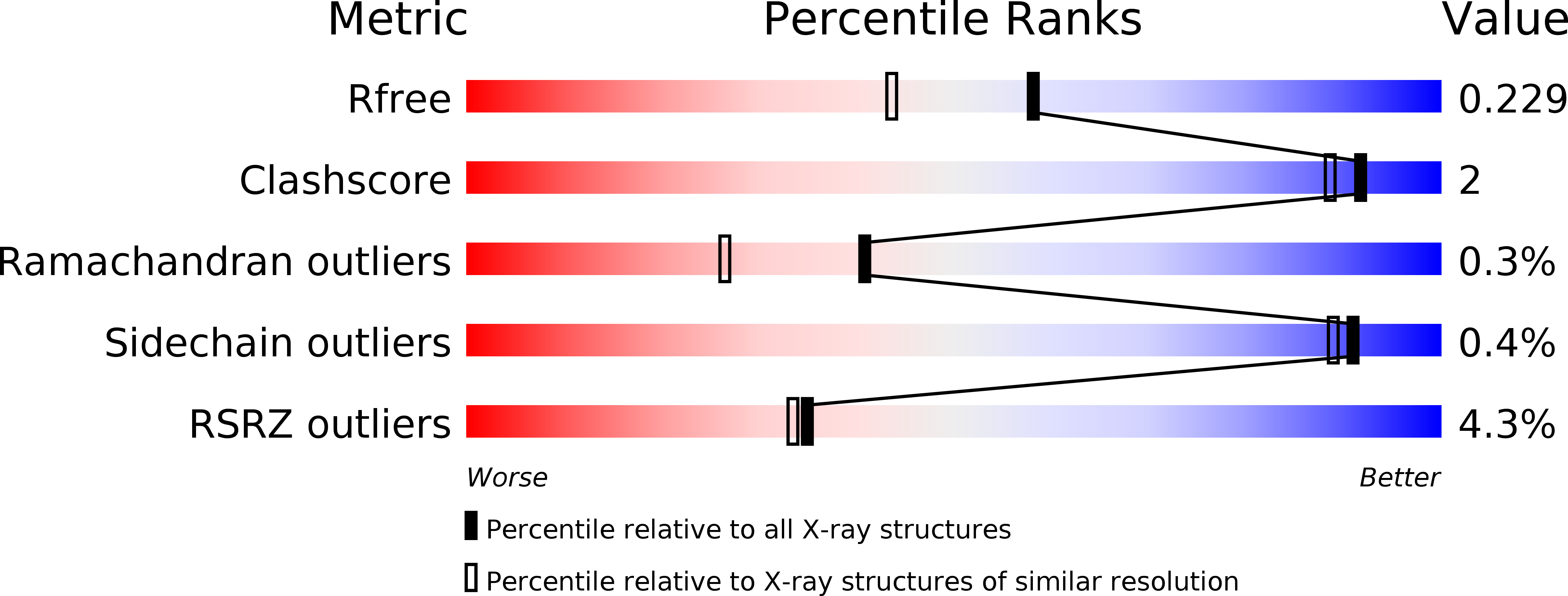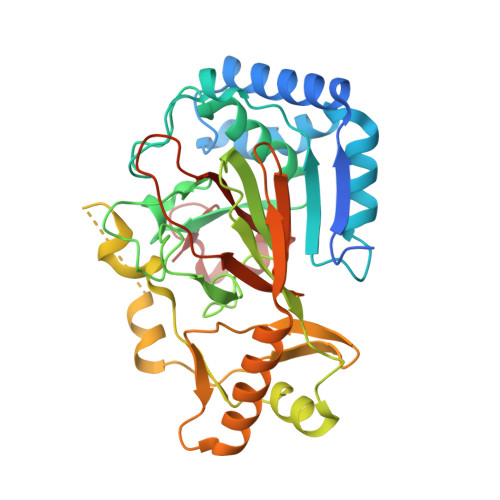Anaerobic fixed-target serial crystallography.
Rabe, P., Beale, J.H., Butryn, A., Aller, P., Dirr, A., Lang, P.A., Axford, D.N., Carr, S.B., Leissing, T.M., McDonough, M.A., Davy, B., Ebrahim, A., Orlans, J., Storm, S.L.S., Orville, A.M., Schofield, C.J., Owen, R.L.(2020) IUCrJ 7: 901-912
- PubMed: 32939282
- DOI: https://doi.org/10.1107/S2052252520010374
- Primary Citation of Related Structures:
6Y0N, 6Y0O, 6Y0Q, 6Y12, 6YPV - PubMed Abstract:
Cryogenic X-ray diffraction is a powerful tool for crystallographic studies on enzymes including oxygenases and oxidases. Amongst the benefits that cryo-conditions (usually employing a nitro-gen cryo-stream at 100 K) enable, is data collection of di-oxy-gen-sensitive samples. Although not strictly anaerobic, at low temperatures the vitreous ice conditions severely restrict O 2 diffusion into and/or through the protein crystal. Cryo-conditions limit chemical reactivity, including reactions that require significant conformational changes. By contrast, data collection at room temperature imposes fewer restrictions on diffusion and reactivity; room-temperature serial methods are thus becoming common at synchrotrons and XFELs. However, maintaining an anaerobic environment for di-oxy-gen-dependent enzymes has not been explored for serial room-temperature data collection at synchrotron light sources. This work describes a methodology that employs an adaptation of the 'sheet-on-sheet' sample mount, which is suitable for the low-dose room-temperature data collection of anaerobic samples at synchrotron light sources. The method is characterized by easy sample preparation in an anaerobic glovebox, gentle handling of crystals, low sample consumption and preservation of a localized anaerobic environment over the timescale of the experiment (<5 min). The utility of the method is highlighted by studies with three X-ray-radiation-sensitive Fe(II)-containing model enzymes: the 2-oxoglutarate-dependent l-arginine hy-droxy-lase VioC and the DNA repair enzyme AlkB, as well as the oxidase isopenicillin N synthase (IPNS), which is involved in the biosynthesis of all penicillin and cephalosporin antibiotics.
Organizational Affiliation:
Chemistry Research Laboratory, University of Oxford, 12 Mansfield Road, Oxford OX1 3TA, United Kingdom.

















